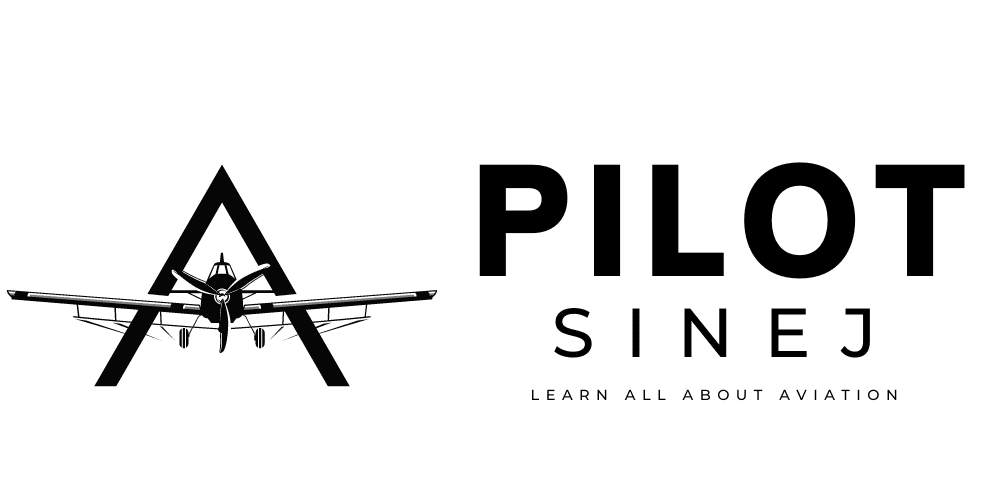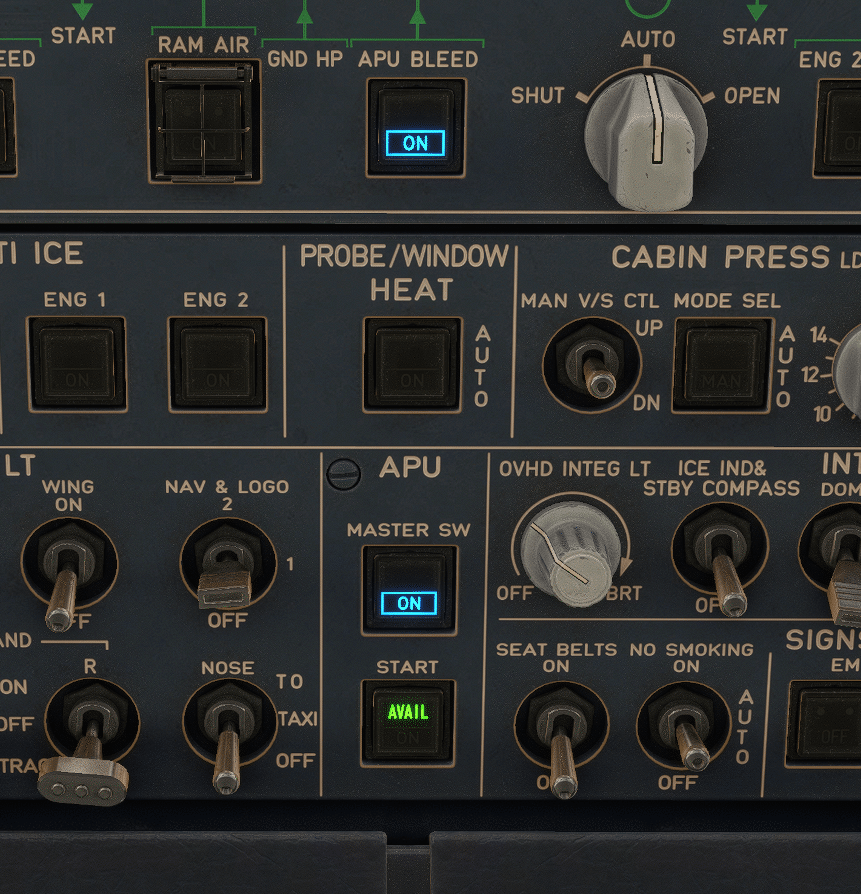The APU MASTER SW pushbutton might seem like a simple “on/off” control — but behind that switch lies a complex sequence of events, especially when bleed air is involved. In this guide, we’ll break down the exact shutdown behavior, cool-down timing, and ECB-controlled logic every A320 pilot should understand.
What Happens When You Press the MASTER SW
- Activates the Electronic Control Box (ECB)
- Opens the APU fuel isolation valve
- Triggers logic checks for electrical, pneumatic, and start systems
- Displays the APU page on the ECAM (if external or main generator power is present)
 Using APU Bleed Air — and Why It Matters
Using APU Bleed Air — and Why It Matters
Using bleed air from the APU is common during engine start and for air conditioning on the ground. However, extracting bleed air significantly heats the turbine section, which makes a proper shutdown sequence essential to avoid long-term damage.
APU Shutdown Sequence (with Bleed Air Use)
- Pilot presses the MASTER SW to OFF
- The ECB detects that bleed air was used
- The bleed valve closes immediately
- The APU enters a cooling run phase (60 to 120 seconds)
- The APU continues spinning to cool its internal components
- Once N reaches about 7%, the air inlet flap closes
- The APU shuts down completely
This entire sequence is fully automatic and managed by the ECB.
🎥 Watch: A320 APU Startup and Shutdown Explained
Here’s a great walkthrough from a real Airbus pilot, showing the full APU startup and shutdown process, including bleed air use:
What If You Skip the Cooling Run?
Using the APU FIRE pushbutton or cutting off battery power will bypass the cooling run. This can lead to heat soak damage in the turbine section — a costly mistake over time. Always allow the system to run its automatic cool-down unless in an emergency situation.
When the APU is used to provide bleed air, its internal components — particularly in the turbine and gearbox — operate at elevated temperatures. If the APU is abruptly shut down without allowing sufficient cool-down, the residual heat cannot be properly dissipated. This can result in thermal stress, accelerated component wear, oil coking, and degradation of seals and bearings over time.
In extreme cases, repeated hot shutdowns can trigger premature maintenance alerts or lead to operational unreliability. Airlines operating in hot-and-high environments, or with frequent short turnarounds, are particularly sensitive to proper APU handling. Remember, the ECB is designed to protect the system — let it do its job.
Always check that the AVAIL light is off, the ECAM page has disappeared, and the inlet flap is confirmed closed before shutting down aircraft power or leaving the cockpit. Patience here preserves reliability down the line.
Practical Tips for Pilots
- Wait for the cooling run to complete before aircraft shutdown
- Do not use the APU FIRE pb unless there’s an actual fire
- The APU ECAM page will disappear ~10 seconds after the full shutdown
- If the flap is still open, the APU is still cooling — be patient
Frequently Asked Questions
How long does the APU cool down after bleed air use?
Why does the APU inlet flap close late?
Can you turn off the APU immediately after engine start?
Related Topics to Explore
- Understanding the A320 APU ECB Logic
- When to Use APU Bleed Air on Ground
- A320 Engine Start Sequence from APU
Conclusion
Understanding the bleed air shutdown logic of the APU MASTER SW is more than systems trivia — it’s about protecting the turbine, ensuring reliable restarts, and operating the APU smartly. With automation doing most of the work, all it takes is awareness and patience to respect the cool-down phase.


 Using APU Bleed Air — and Why It Matters
Using APU Bleed Air — and Why It Matters